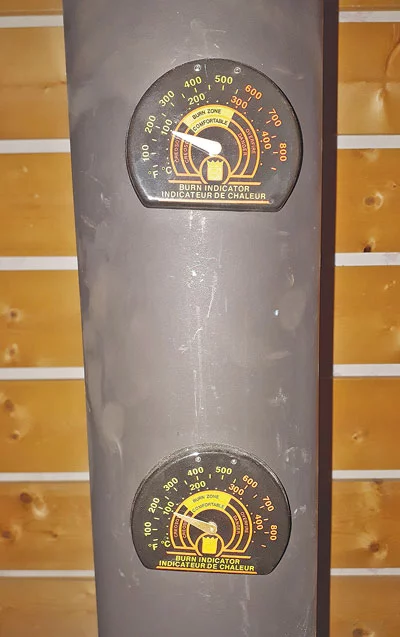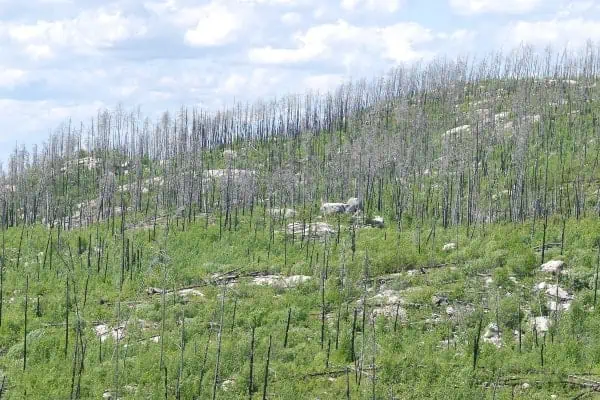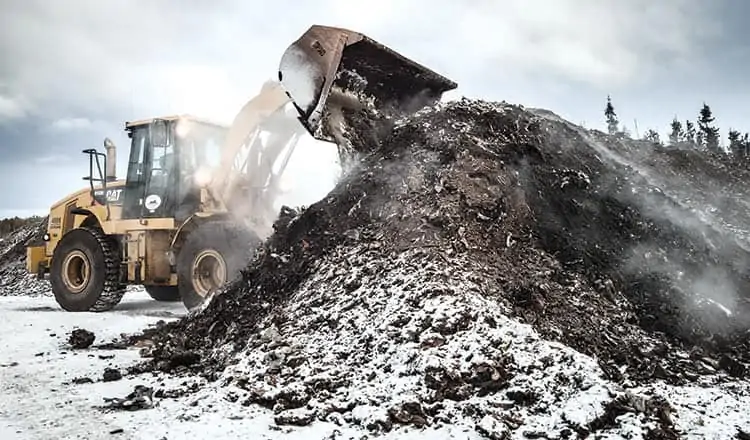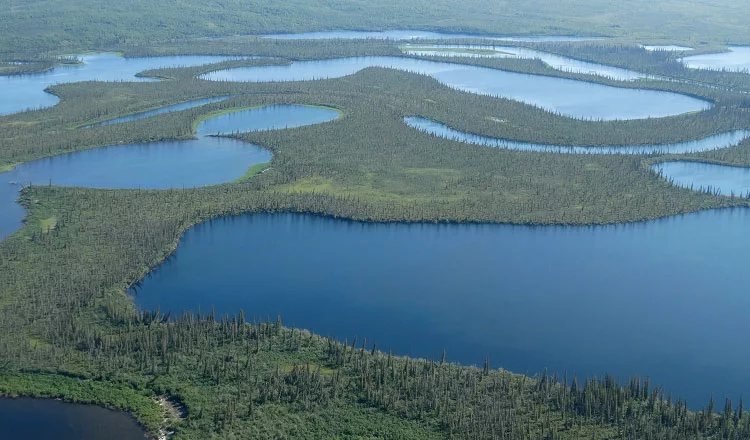
First and foremost …
I have the greatest respect for all firefighters when they fight a fire—be it a house fire or a forest fire.
As a conservation officer in Ontario, we were trained in fighting forest fires. It is one of the most-dangerous jobs you could possibly have, as any minute the fire could turn on you.
The only fire I was in charge of was a small three- or four-hundred-acre ground fire north of Chesterville, Ontario, back in the early 60s. A grass fire was started by a berry picker, a careless smoker who threw away a lit cigarette. It was a surface fire (no trees) and set fire to the tall grass. The problem was that there was more than four feet of peat under the surface and that was also on fire. Fortunately, with the help of some backhoes, we diverted a small creek, and within a week and a half we had the fire out before it could reach a conifer forest.
Elements of a forest fire …
I have seen some underground peat fires burn all winter.
There is more to forest fires than most would think, and the North is a prime target for a giant, deadly fire. First of all, to have a fire, we look at what is called the three sides of a triangle—fuel, heat and oxygen. Many plants contain all the volatile chemicals to fuel a fire. Conifer trees (evergreens), common in northern forest regions, are fast-burning fuel. Not only are conifer trees excellent fuel for forest fires, but trees such as the white birch, with their supply of sap and paper-like bark, are highly flammable (can create its own wind up to 60 MPH).
Fire and global warming …
Another factor we must consider in the prospects of such giant fires is the Global Warming Effect. As the climate warms, the soil within a forest will dry out much faster than previous years. One only has to look at the warming of temperatures in California to understand the prospects of the danger of giant forests fires in the future, and at this point I am thinking of the Yukon.
The great outdoors …
This is not the only threat to having more forest fires. More people each year are visiting the northern wildernesses in Canada for outdoor experiences. Here, within, presents another danger and that is inexperienced people starting campfires (and also leaving such a fire unattended). Yes, some visitors are taught how to paddle a canoe or kayak, but are they taught the safe way to build a campfire? Do they know the flammable gasses contained in plants and trees? And do they know about the Triangle of Fire? Very doubtful.
Your community …
The part of the community you live in will tell you the degree of fire risk you would face if a fire like Paradise, California, should take place. Consider the following … Should a bad fire occur downtown, in the lower portion of the valley, people living up on the ridges are in greater danger than those down in the valley. Heat rises. This will heat up the ridges. Once the soil or wood reaches 800℉, you have ignition and fire. Fire builds winds.
When to evacuate …
Fires burn faster uphill than downhill. If such a fire occurs and the word comes out to EVACUATE, do so immediately as there may not be a second chance. Have an evacuation plan.
Back in the 60s,I took a survival course under the guidance of Berndt Berglund (world-famous). Part of the course dealt with forest fires.
A simple test for forest-fire risk …
We learned how to detect any danger of a forest fire.
- Simply hold a dead pine needle two inches apart between your thumb and forefinger.
- Start to bend it and if it breaks at about a quarter of the full closure, the fire risk is high.
- If it bends more than one half, the risk of fire is low. This is due to the moisture in the air; consequently, in the pine needle itself.
- Repeat this with a couple of needles to get a final result.
Do not panic (be prepared)
If there is a fire and you find yourself trapped, look for a rocky area or a small stream or body of water. Do not panic. If you are on more than a one-day trip, always carry a map of the area. You may know the well-traveled trail, but do you know what is on the other side of the trail? Having a map can give you the lay of the land, as well as save your life.
A word to the wise …
For those with wood-burning stoves. There is a small and inexpensive heat detector you can buy for your wood stove. It has a magnet that holds the heat detector to your fireplace stove pipes. It should be located about 11 inches above your stove. These little heat detectors will show you the safe burning temperature you should burn your fire at and also when the heat is approaching a danger point. Generally, you can buy these little life-saving devices at any store that sells wood stoves.
This week’s saying: “The ultimate measure of a man is not where he stands, at time of comfort, but where he stands at challenge and controversy.” –Martin Luther King (1929–1968, U.S. civil rights leader)




